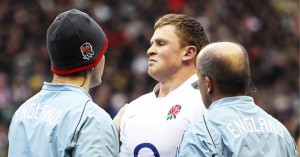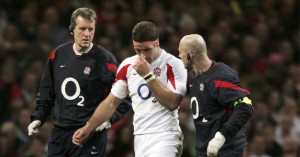The International Rugby Board has approved a revised set of protocols governing concussion, but has rejected the much-supported plan for a Concussion Bin at the top end of the game.
An amendment to Regulation 10, approved by the IRB Council at its Special Meeting of Council in Dublin, has paved the way for a new robust set of guidelines surrounding concussion that will enhance the protection of players at all levels of the Game.
Players, coaches, medics and administrators now have access to an easy-to-use dedicated set of guidelines that cater for the elite and community levels and recognise that medical diagnosis and support is not always available to players at every level of the game. Importantly, greater clarity and flexibility will aid the process.
Grounded in extensive research to increase understanding, the new guidelines are now available at the IRB’s dedicated Player Welfare website www.irbplayerwelfare.com. Underpinning the programme will be the roll out of a Game wide education programme that highlights the dangers of ignoring the symptoms of concussion.
CLICK HERE TO VIEW THE NEW GUIDELINES
IRB Chairman Bernard Lapasset said: “The safety and welfare of players is of paramount concern to the IRB and its Member Unions. At the inaugural IRB Medical Conference we identified concussion as a key priority for the game. These new guidelines are the culmination of a process that has seen collaboration with medical experts within our Unions and consultation with independent experts.”
“We all have a duty of care to our players and these new guidelines will deliver a more appropriate process of concussion identification and management for players at all levels of the game. This is a very exciting development for the Game.”
“Education is key. Collectively we have a responsibility to ensure that players, coaches and administrators are fully educated on the dangers of concussion. A robust education programme is essential to ensure risks are not taken and concussion is appropriately managed by players and coaches.”
Founded on the internationally accepted Zurich Consensus document of which the IRB was a contributor, the new guidelines feature two new processes. The first is a dedicated process of diagnosis and management. The second is a defined Graduated Return To Play protocol that recognises that players across the IRB’s 117 Member Unions do not have the same level of access to dedicated medical assessment and supervision. If there is no dedicated medical supervision a mandatory 21-day stand down applies. Medical supervision is mandatory for children and adolescents.
The new diagnosis and management guidelines clearly define concussion symptoms in an easy to access format and emphasise that risks should never be taken with players; that players should be removed from the field immediately if there is any doubt that concussion may have been sustained and that a Graduated Return To Play protocol is accessible to players at all levels of the Game.
The Graduated Return to Play protocol will add more flexibility and clarity for players as they enter the rehabilitation process in preparation for returning to play. The new protocol enables a player to move through a defined six-level process from rest to gentle exercise through to contact practice in a monitored environment before being able to play over a six-day period. Any recurrence of symptoms will result in the player returning to the previous stage after a period of 24 hours rest.
The amended Regulation 10 is operational with immediate effect and the supporting education programme through the IRB and Member Unions will be rolled out this year.








